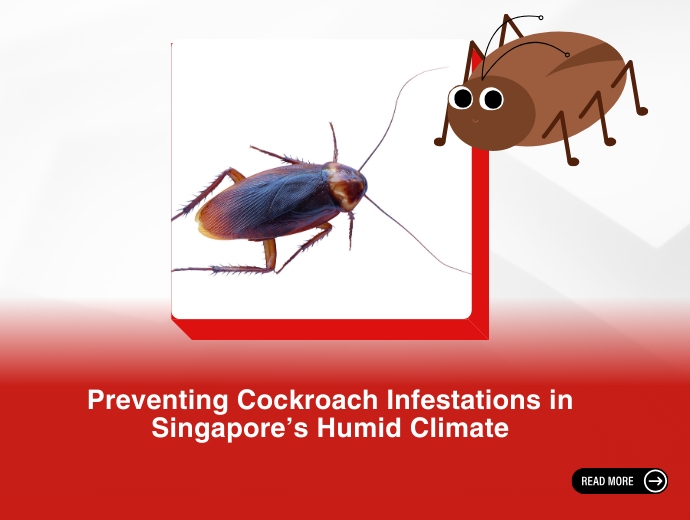Guarding Against Complacency: Paving the Path for Future Success in Rodent Control
In the ongoing battle against rodents, complacency can sneak up on us when we least expect it. While Singapore has been applauded for its robust rodent control measures, recent statistics and emerging health concerns have nudged us to reevaluate our strategies.
The Current State of Rodent Control in Singapore
Over the years, Singapore has been diligent in keeping rodent populations at bay, armed with stringent hygiene regulations, vigilant pest surveillance, some government spending and targeted control initiatives. These efforts have helped keep our rodent neighbors in check and minimized the associated health risks.
However, just when we thought we had the upper hand, recent data has thrown us a curveball: a resurgence in rodent populations and an increase in rodent-related issues across urban areas. It's a gentle reminder that even the best-laid plans can go awry, and it's time to dust off our pest control playbook.
The Business Impact of Rat Infestations
Rodents aren't just unwelcome guests; they can also pose significant challenges for businesses across various industries. From nibbling away at profits to leaving a trail of reputation-tarnishing evidence, they're the uninvited guests crashing the party.
In the world of business, reputation is paramount. Rodent infestations can quickly tarnish the image of any establishment, particularly within the sensitive sectors of food and hospitality. The mere whisper of rodents on the premises can sow seeds of doubt in the minds of customers, casting shadows over the cleanliness and safety standards they expect. Rebuilding a tarnished reputation demands substantial effort and resources, highlighting the critical importance of proactive pest management strategies.
Health and Safety Concerns Related to Rodents
Beyond mere reputation damage, rodent infestations pose significant health and safety concerns. While these creatures may appear harmless, they are carriers of a myriad of diseases, presenting serious risks to both employees and customers alike. Left unchecked, infestations can lead to a surge in illnesses, ranging from mild discomfort to severe health complications. Moreover, businesses that fail to uphold stringent health and safety standards risk regulatory violations and legal liabilities, further exacerbating the consequences of neglecting pest control measures.
Communicable Diseases Spread by Rodents in Singapore
The financial ramifications of rodent damage extend far beyond mere aesthetics. Beyond nibbled wires and contaminated products, businesses face direct financial losses from costly repairs, damaged inventory, and potential fines for non-compliance with public health regulations. The toll of a rodent infestation can be substantial, threatening the financial stability and viability of even the most robust enterprises.
Beyond the immediate business impact, the threat posed by rodents extends to public health. Singapore, with its dense urban landscape and bustling population, is particularly vulnerable to the spread of diseases carried by these pests. Here are some of the known communicable diseases found in Singapore that are potentially spread by rodents:
- Hantavirus: Though less common in Singapore, Hantavirus is a group of viruses primarily transmitted by rodents. In humans, Hantavirus infection can lead to Hantavirus Pulmonary Syndrome (HPS), a severe respiratory illness with symptoms including fever, muscle aches, and difficulty breathing. Vigilance is crucial due to the severity of HPS, which can progress rapidly, potentially leading to respiratory failure and death in severe cases.
- Leptospirosis: This bacterial infection is spread through contact with water, soil, or food contaminated with the urine of infected animals, particularly rats. Given Singapore's dense urban environment, the risk of leptospirosis is notable, with cases reported annually. Symptoms range from mild flu-like illness to severe manifestations such as jaundice, kidney failure, and meningitis. Prompt treatment is essential to prevent organ damage and potential fatality.
- Rat Bite Fever (RBF): Caused by bacteria transmitted through bites or scratches from infected rodents, including rats and mice, RBF can lead to fever, rash, headache, muscle pain, and joint pain. While relatively uncommon, cases of RBF have been reported in Singapore. Swift medical intervention is necessary to prevent serious complications such as abscesses, septicemia, and meningitis.
- Salmonellosis: Salmonellosis is a bacterial infection commonly associated with contaminated food and water. Rats and mice can transmit Salmonella through their feces, urine, and nesting materials, posing a risk in urban settings like Singapore. Symptoms include diarrhea, abdominal cramps, fever, and vomiting. Severe cases can lead to dehydration and systemic infection, necessitating prompt medical attention.
- Typhus: Transmitted by infected fleas often found on rodents like rats, typhus comprises a group of infectious diseases. While historically rare in Singapore, sporadic cases have been reported. Symptoms include fever, headache, rash, joint pain, and in severe cases, organ failure. Timely treatment with antibiotics is crucial to prevent life-threatening complications.
By staying informed about these diseases and implementing effective rodent control measures, businesses not only protect their interests but also contribute to the broader public health efforts in Singapore.
Innovative Technologies for Effective Rodent Control
With the notable increase of rodent citing, it isn’t surprising to that in a recent Chanel News Asia article on 7th Feb 2024, they evidenced dogs being infected with leptospirosis (Rain and rats to blame for more dogs in Singapore being infected with leptospirosis, vets say - Channel News Asia (7th Feb 2024). This is not unique to dogs. Between 2012-2015, The Ministry of Health in Singapore reported 165 Leptospirosis cases of which 60% were locally acquired. This data was extracted from Griffiths, J., Yeo, H.L., Yap, G. et al. Survey of rodent-borne pathogens in Singapore reveals the circulation of Leptospira spp., Seoul hantavirus, and Rickettsia typhi. Sci Rep 12, 2692 (2022). https://doi.org/10.1038/s41598-021-03954-w
It seems like a storm may be brewing on the rodent front! While traditional methods like baiting and trapping have long been the go-to for rodent control in Singapore, it's clear they're not enough to weather the storm of urban rodent challenges. Sure, these methods are like old faithfuls—reliable and familiar, like your favorite umbrella in a rainstorm. But just like you wouldn't go out in a typhoon without a sturdy raincoat, we can't tackle rodent issues in Singapore's bustling urban landscape with just bait and traps.
Embracing Innovation for Better Pest Management
In confronting the challenge of rodent control, it's crucial to harness innovative technologies alongside traditional methods. ORIGIN, for instance, utilizes cutting-edge solutions like RATSENSE, which leverages advanced technology to monitor and manage rodent activity effectively.
The integration of such technologies represents a progressive step forward in our approach to pest management. By embracing tools like RATSENSE, we can enhance our ability to identify high-risk areas, track rodent populations, and deploy interventions with precision. This not only improves the efficacy of rodent control efforts but also optimizes resource allocation and minimizes environmental impact.
Proactive Strategies to Safeguard Public Health
Encouraging the adoption and integration of these technologies aligns with a broader belief in the power of innovation to address complex challenges. As we confront evolving threats like rodent-borne diseases and urbanization, it's essential to leverage the latest advancements in science and technology to safeguard public health and safety.
In conclusion, the recent resurgence in rodent populations and the threat of diseases transmitted by rats serve as stark reminders that complacency is not an option when it comes to rodent control. By rethinking our strategies, embracing innovation we can safeguard the health and well-being of our communities and ensure that Singapore keeps public health at the forefront to build healthier communities.
The guidelines from NEA for service buyers ( Guidelines for Service Buyers) seem to miss the mark a bit. Instead of diving into data and trends, they're all about documenting actions taken—kind of like going through the motions without really seeing the bigger picture. It's a bit like running on a treadmill; you're moving, but are you really getting anywhere? As Einstein famously said, "Insanity is doing the same thing over and over again and expecting different results."
So, it's clear we need to take a firmer stance and adopt a different approach. When it comes to rodent control, being proactive is non-negotiable for safeguarding the well-being of our communities. For a more comprehensive approach, consider reaching out to ORIGIN.


.png)



.png)
